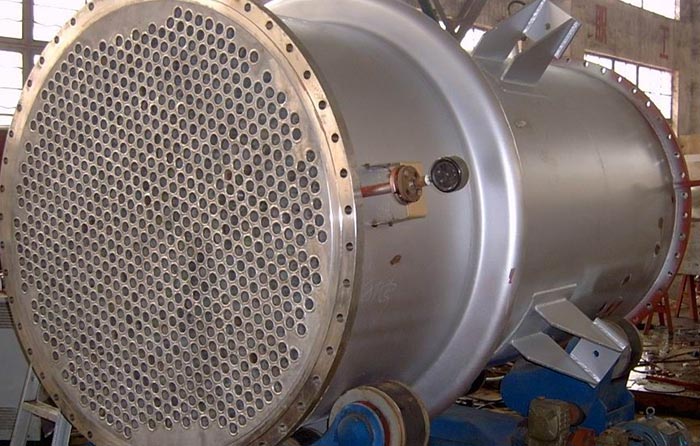Solutions to Common Problems When Purchasing Clad Steel Plates
Introduction to Clad Steel Plates and Their Benefits
Clad steel plates are versatile materials used in industries such as shipbuilding, petrochemical plants, and construction, combining the strength of carbon steel with the corrosion resistance of other metals. These plates provide a cost-effective solution for applications requiring both durability and protection against harsh environments. However, purchasing clad steel plates can present a range of challenges that may impact project timelines and budgets. In this article, we will explore common problems customers encounter and offer practical solutions to help you make an informed purchasing decision.
Common Issues When Purchasing Clad Steel Plates
1. Incorrect Selection of Cladding Material
One of the most common problems when purchasing clad steel plates is selecting the wrong cladding material. Cladding material, such as stainless steel, nickel alloys, or copper, plays a crucial role in determining the performance of the clad steel. The right choice depends on factors such as corrosion resistance, heat tolerance, and mechanical strength, which vary significantly across materials.
For example, stainless steel cladding is excellent for environments with high corrosion risks, while nickel alloys are better suited for extreme temperatures or chemical exposure. To avoid this mistake, it's essential to assess the specific conditions in which the clad steel will be used, such as exposure to chemicals, heat, or pressure, and choose the appropriate material accordingly.
2. Misunderstanding Bonding Processes
The bonding process used to attach the cladding to the base steel is another critical factor that can affect the performance of clad steel plates. Different bonding methods include explosive bonding, hot rolling, and weld cladding. These processes each have distinct advantages and limitations, depending on the application.
Explosive bonding, for example, creates a strong bond but may not be suitable for thinner plates or intricate shapes. Hot rolling provides a more uniform bond and is commonly used for thicker plates, but it requires specific conditions to prevent defects. To avoid issues, always confirm with your supplier about the bonding method used for your order and ensure it aligns with your application’s requirements.
3. Price Variations and Budget Management
Price discrepancies between suppliers are another challenge when purchasing clad steel plates. The cost of these materials can vary significantly depending on factors such as cladding thickness, the type of cladding material, and the production method. For example, clad plates with thicker cladding or those produced using more complex methods like explosive bonding tend to be more expensive.
To manage your budget effectively, it's important to get detailed quotes from suppliers that break down the costs by material, thickness, and process. This transparency will help you understand the value of the materials you’re purchasing and prevent you from overspending on unnecessary specifications.

4. Verifying Quality and Specifications
Ensuring the clad steel sheets meet the required specifications for your project is vital. However, this can be challenging, as not all suppliers provide clear documentation or certifications to verify material quality. Without proper verification, you may receive plates that don't meet your expectations or requirements, leading to project delays or failures.
To avoid this issue, always request certifications, test reports, and material specifications before placing an order. Trusted suppliers will provide this documentation, including mechanical properties, corrosion resistance data, and chemical composition reports. This will ensure that the plates meet the necessary standards for your project.
Case Studies: Real-World Solutions
Consider the case of a manufacturing company that was facing issues with their clad steel plates during a large-scale refinery project. The plates they had ordered were supposed to withstand high temperatures and aggressive chemicals, but they failed to meet the required performance standards due to improper bonding. After reviewing their purchase, they worked with a different supplier that used the correct bonding method and provided comprehensive material certifications. This change helped them meet project deadlines and improve the safety and durability of the refinery.
In another example, a shipbuilding company was struggling with corrosion issues on their newly constructed vessels. The company had originally selected a lower-cost clad steel plate with stainless steel cladding, but the material didn’t provide the necessary resistance to marine corrosion. After consulting with the supplier, they opted for a higher-quality nickel alloy cladding, which significantly improved the longevity and performance of the ships in seawater environments.
How to Avoid Common Pitfalls When Purchasing Clad Steel Plates
1. Understand Your Project’s Specific Needs
Before making a purchase, it is critical to understand the specific requirements of your project. Consider the environmental factors, such as exposure to chemicals, high temperatures, or mechanical stress. By determining the conditions under which the clad steel plates will be used, you can choose the appropriate material and bonding process, ensuring optimal performance and longevity.
2. Partner with Reputable Suppliers
Working with trusted suppliers is crucial to ensure the quality and reliability of your clad steel plates. Look for suppliers with a proven track record and positive customer feedback. They should be able to provide detailed product documentation, including certifications, test reports, and material specifications. This will help guarantee that the plates meet the necessary standards for your application.
3. Request Samples or Test Reports
Before committing to a large order, it is advisable to request samples or test reports to verify the material’s performance. These reports should include details on the mechanical properties, corrosion resistance, and chemical composition of the steel. Verifying these factors ensures that the clad steel plates will perform as expected in your specific application.
4. Review Price Breakdown and Specifications
When comparing prices, ensure that the supplier provides a clear breakdown of costs based on material type, cladding thickness, bonding method, and other relevant factors. This will help you make an informed decision and avoid unnecessary expenses.
Next Steps
If you're ready to purchase high-quality clad steel plates for your project, don't hesitate to contact our team. We offer expert guidance to help you select the best materials for your application. Our experienced professionals will ensure you receive detailed documentation and the highest quality products tailored to your specific needs. Reach out today to get started!
- Previous: None
- Next: None

